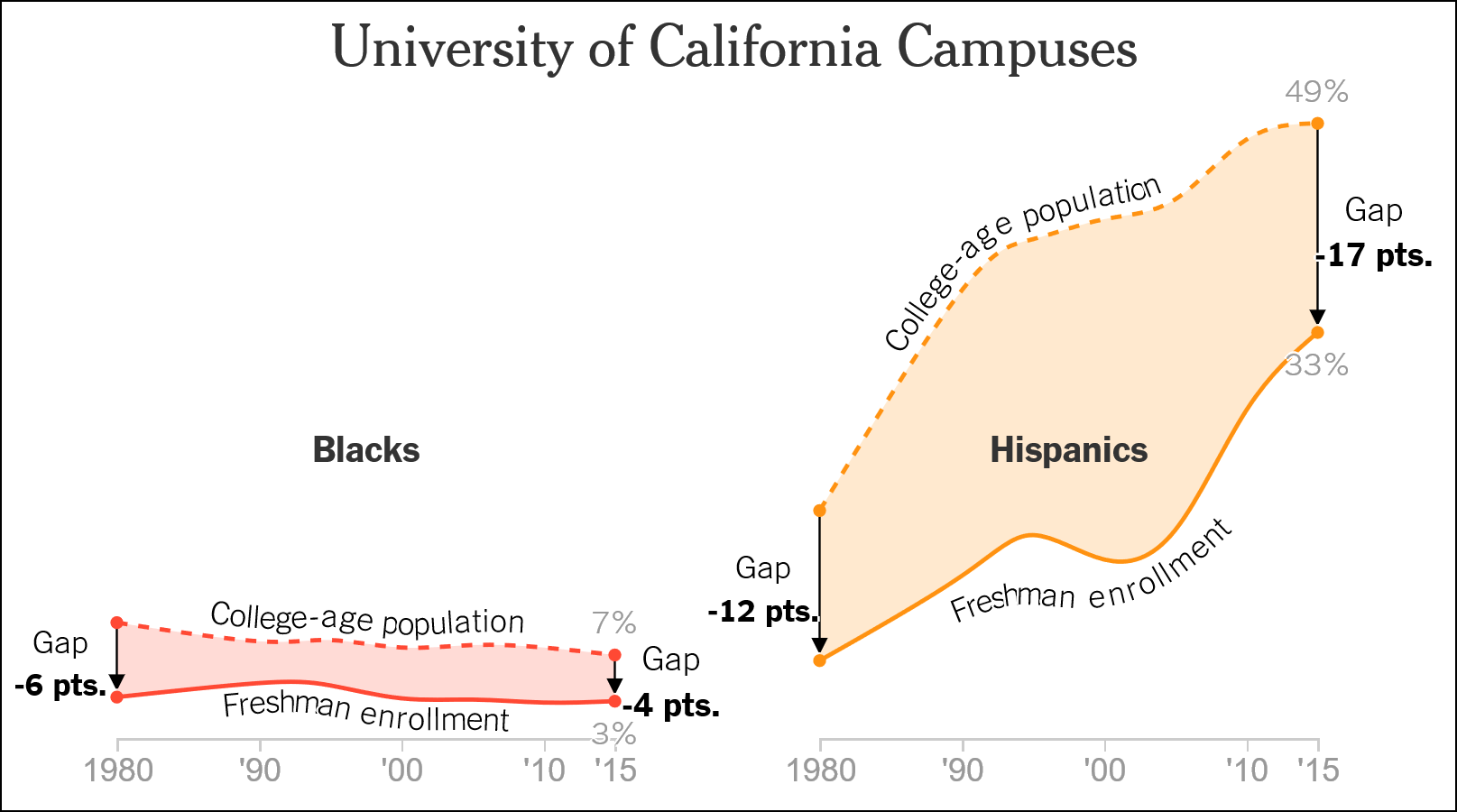Bob Somerby has been griping for a few days about a recent New York Times piece claiming that “Blacks and Hispanics Are More Underrepresented at Top Colleges Than 35 Years Ago.” Is this really true? I’d say Somerby is right to be skeptical. Let’s illustrate the problem with the Times chart for UC schools:

Oddly, the data editors who created this chart included numerical percentages on the right, but not on the left. This is a very peculiar decision unless you’re trying to mislead people. So let’s take another look at this.
When you have two trends that are increasing, you can’t look at the absolute differences over time. For example, suppose I have $1 and you have $2, and we both put our money in the bank. Over a decade, inflation doubles and so does our money. Now I have $2 and you have $4. The absolute difference has gone from $1 to $2, but the growth rate is equal and our relative purchasing power is exactly the same as before. It would be misleading to suggest that anything has changed.
In the case of college enrollments, looking at absolute differences is even more wrongheaded since the top and bottom lines in the Times chart measure completely different things. So what should we look at? The answer is relative growth trends, but unfortunately the data in the Times charts is all but useless for this. The top line is percent of the college-age population while the bottom line is percent of UC enrollments. I’ve calibrated the left axis, and the growth rates look like this for Hispanics:
- College age Hispanics as percent of all college-age: 18 percent to 49 percent, growth = 2.7x.
- UC freshman enrollment as percent of all UC freshman enrollment: 6 percent to 33 percent, growth = 5.5x.
This is suggestive of relative growth rates, but without more details about the UC system and California demographics it doesn’t provide anything more than that. So I dug into it. This turned out to be spectacularly difficult, so much so that I began to wonder if I was missing something obvious. I’ll spare you the details, but in the end, my rough estimate is that in 1980 about 2 percent of college-age Hispanics went to UC schools. Today, 5 percent do. That’s very significant progress. Hispanics may or may not be “underrepresented,” depending on how you measure it, but they very clearly aren’t more underrepresented than they used to be.
I don’t feel like going through this exercise for all of the other charts. There are probably some cases where minority students really have fallen behind, though I suspect not many. And it’s certainly arguable that we should have made more progress than we have. That said, it’s just wrong to say that college-age minorities have it worse than they did in 1980. The Times should be more careful in how they present data like this.


















